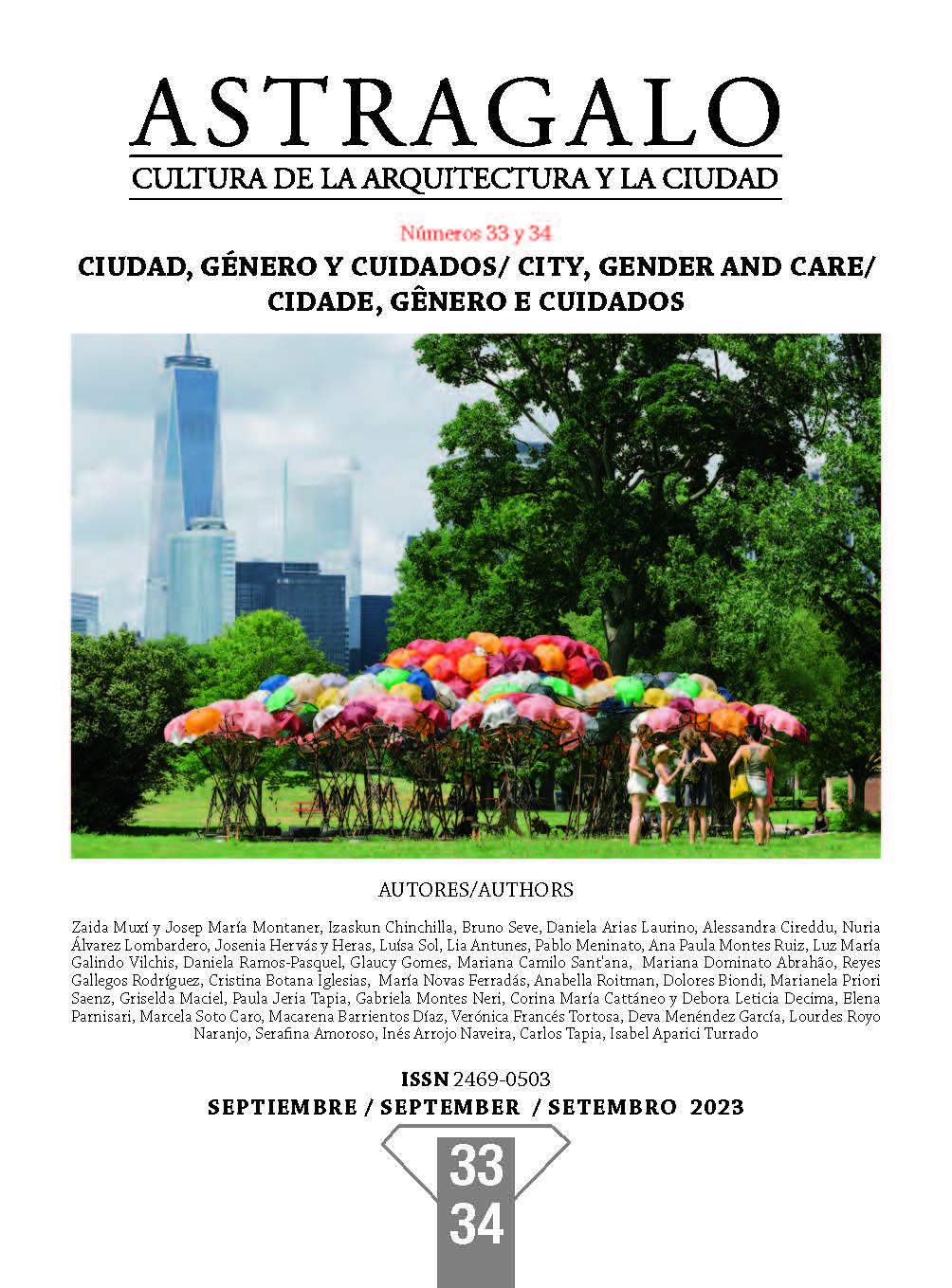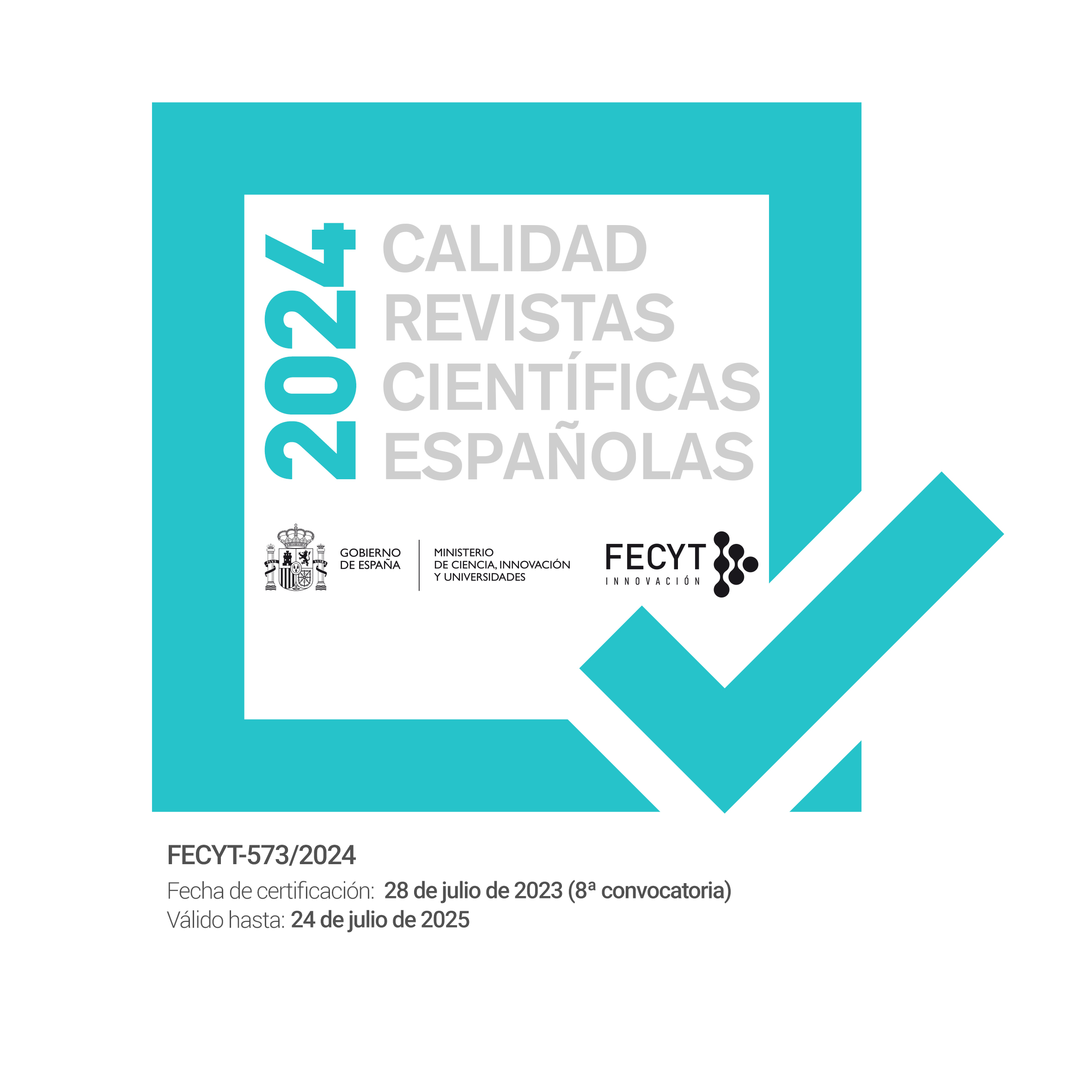La periferia urbana desde una perspectiva de género.
DOI:
https://doi.org/10.12795/astragalo.2023.i33-34.13Palabras clave:
género, barrios, patrimonio, periferia, mujeresResumen
Este artículo es fruto de la investigación que he realizado en el último año (desde Febrero de 2022) sobre cómo trasladar a los barrios de Sevilla el concepto “La ciudad de los 15 minutos”, creado por Carlos Moreno. Como resultado de dicha investigación y del trabajo de campo realizado para llevarla a cabo, surge el proyecto Ellas en la ciudad, y la hipótesis que plantea; que es la necesidad de hacer emerger e incorporar a la cultura urbana la experiencia de una generación de mujeres, las primeras pobladoras de la periferia urbana, como patrimonio inmaterial fundamental hacia un planteamiento urbano completo sobre nuestros barrios.
Hablar de un carrito de la compra, un andador o un carrito de bebé como indicador urbano, no es más que una metáfora de las décadas que lleva esta generación "tirando del carro" sin ser reconocidas. Estas madres, tías y abuelas invisibilizadas, más del 20% de la población, han sido el sostén de las ciudades y de las familias. Ellas y sus macetas, sus carritos, sus saludos, sus potajes y también sus luchas vecinales, dibujan aún hoy la vida cotidiana de nuestros barrios. Son las principales usuarias del transporte público, de los mercados de abastos, del comercio local, de las plazas… donde sin embargo, aún hoy, predomina el asfalto, los coches y la escasez de vegetación, de mobiliario y de sombra.
Ellas son las más sostenibles en una ciudad inaccesible e insegura que a menudo les da la espalda.
Descargas
Citas
Bauman, Zigmunt. 2007. Tiempos líquidos. Barcelona: Tusquets.
Borja, Jordi y Muxí, Zaida. 2003. El espacio público: ciudad y ciudadanía. Barcelona: Electa.
Calvo Salazar, Manuel. 2020. MOVILIDAD SOSTENIBLE, El caso de la aglomeración urbana de Sevilla. Tesis Doctoral. Universidad Pablo de Olavide. Disponible en: https://rio.upo.es/xmlui/handle/10433/8639
Castells, Manuel. 2017. Otra Economía es posible. Cultura y Economía en tiempos de crisis. Madrid: Alianza Editorial.
Col-lectiu Punt 6. 2019. Urbanismo feminista. Por una transformación radical de los espacios de vida. Barcelona: Virus.
Delgado, Manuel. 1999. El animal público. Barcelona: Anagrama.
Estudios territoriales. 2020. “Género y urbanismo en España: experiencias y perspectivas”. Ciudad y territorio, 52(203): 5–12. https://doi.org/10.37230/CyTET.2020.203.01.
Gallegos Rodríguez, Reyes. 2019. “Revertir la función urbanística. Propuestas-ensayos para la ciudad de Sevilla: el Plan Reaviva y la Av. el Greco”. Astrágalo, 26: 115-140. https://dialnet.unirioja.es/descarga/articulo/7541704.pdf
Gehl, Jan. 2003. La humanización del espacio urbano. La vida social entre los edificios. Barcelona: Reverté.
Guattari, Félix. 1990. Las tres ecologías. Valencia: Pre-textos.
Izquierdo, Rosario. 2013. Diario de campo. Barcelona: Caballo de Troya.
Jacobs, Jane. 1961. Muerte y vida de las grandes ciudades. Madrid: Capitán Swing.
Latour, Bruno. 1993 We Have Never Been Modern. Cambridge: Harvard University Press.
McDonough y Braungart. 2002. Cradle to Cradle: Remaking the Way We Make Things. USA: Nort PointPress.
Moreno, Carlos. 2023. La revolución de la proximidad. Madrid: Alianza Editorial.
Muxí Martínez, Zaida, Casanovas, Roser, Ciocoletto, Adriana, Fonseca, Marta, & Gutiérrez Valdivia, Blanca. (2011). ¿Qué aporta la perspectiva de género al urbanismo?. Feminismo/s, 17: 105–129. https://doi.org/10.14198/fem.2011.17.06
Preciado, Paul. 2023. Dysphoria mundi. Madrid: Anagrama.
Sassen, Saskia. 2003. Contrageografías de la globalización. Género y ciudadanía en los circuitos transfronterizos. Madrid: Traficantes de sueños.
Sennett, Richard. 2012. Juntos. Rituales, placeres y política de cooperación. Madrid: Anagrama.
Solnit, Rebecca. 2011. Wanderlust. Una historia del caminar. Madrid: Capitán Swing.
Descargas
Publicado
Cómo citar
Número
Sección
Licencia
Derechos de autor 2023 Reyes Gallegos Rodríguez

Esta obra está bajo una licencia internacional Creative Commons Atribución-NoComercial-CompartirIgual 4.0.


















